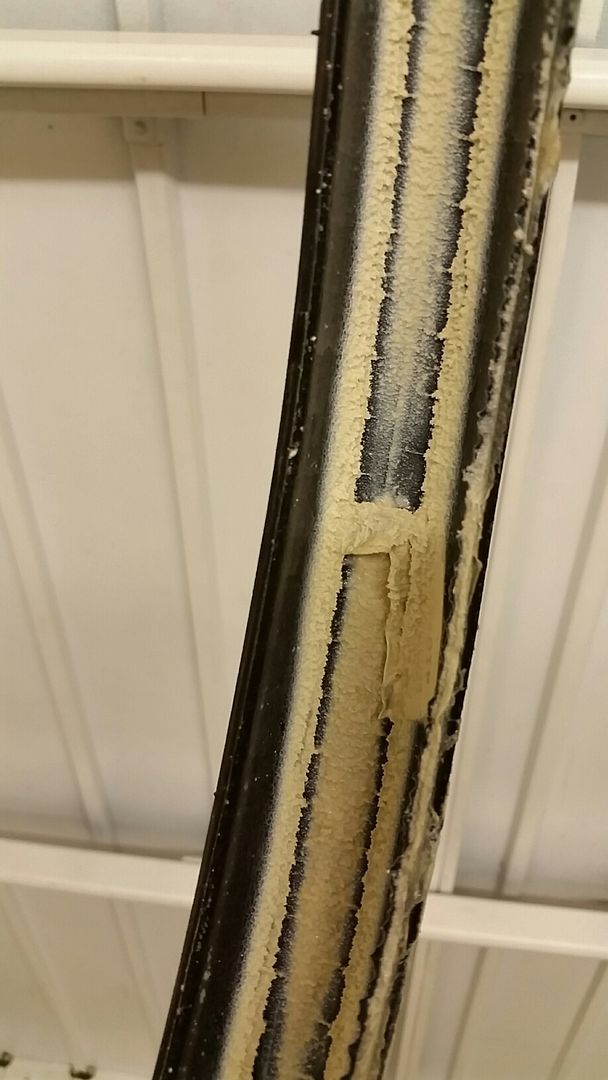Anyway, I just purchased a pair of 23mm Schwable One tubeless tyres and set about the task of fitting them this afternoon. I went for 23mm version as I wasn't sure how wide they would be in the real world and I don't have a huge amount of mudguard clearance. But now I have seen the 23mm's, I think that I could have got away with the 25mm version now.....but arr well, maybe next time.
Overall the installation was really quick, simple and pretty painless to be honest and an awful lot easier than fitting non tubeless MTB tyres as tubeless!!
I used a compressor for the first one but just a track pump for the second, no problems with either. Both tyres inflated and seated instantly up and on to the wheel rim beads. But to be fair I did use tyre soap and I think that I would certainly recommend using it.
I would also suggest NOT to put any sealant in until you have the tyre beads seated on both sides of the wheel rim. Then deflate the tyre, remove the valve core and syringe in the 2ozs of liquid Latex, then re inflate up to the required pressure.
The Schwable tyres were a little tight to fit, but no worse than any some road tyres that I have fitted in the past to be honest. I didn't need to utilize any levers either, just made sure that the tyre was seated right in the wheel well all the way around to give you the most spare tyre to play with. The last bit you can roll over the rim and then pull the tyre upwards to allow the bead to unfold underneath its self.
But in the event of some serious side wall damage out on the road I dont think that I would like to have to remove the tyre plus the liquid Latex contents in order to fit a tube by the side of the road. I would imagine that would be a right swine as everything would be plastered in the Latex sealant. With the best will in the world that's not gonna be a couple of minutes repair is it?
So, lets see some figures then:-
Shimano 6700 Ultegra (front) wheel inc skewer - 738 grammes
As above fitted with a 23mm GP4000s tyre and Continental 'Light' innertube - 1025 grammes
As above wheel, now fitted with 23mm Schwable One Tubeless tyre and 2oz of Stans No Tubes - 1126 grammes
Making a total weight difference of 101 grammes
While I was at it, I decided to weigh some other tyres just out of interest:-
Schwable One (Tubeless) 23mm - 297 grammes
GP4000S 23mm - 212 grammes
4 Season 23mm - 242 grammes
Pro 3 23mm - 189 grammes
Pro 4 Endurance 23mm - 232 grammes
Pro 4 Endurance 25mm - 245 grammes
Vittoria Pave 25mm - 261 grammes
Continetal Race 28 'Light' innertube 42mm - 75 grammes
2ozs of Stans No Tubes - 91 grammes
So I guess that its road test time now and lets see how much of a difference it makes or feels. As a starting point I will be trying 80/85psi in the front and 90 psi in the rear.
Wish me luck......
